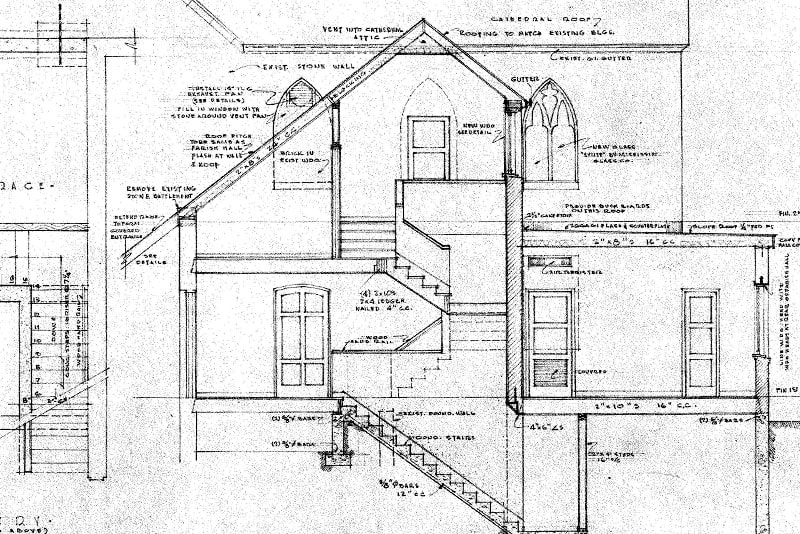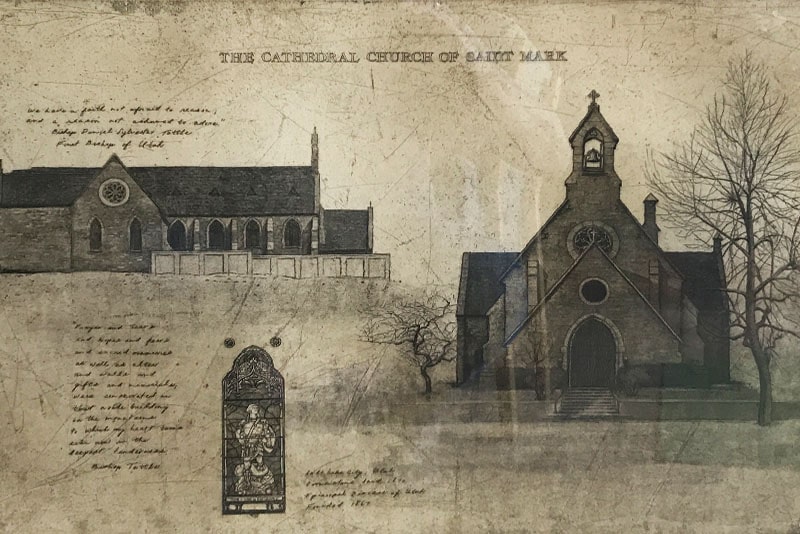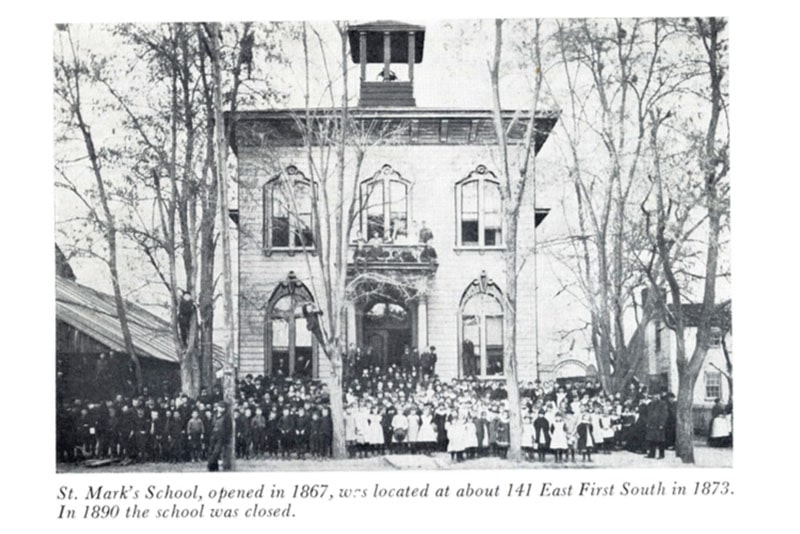The Episcopal Church has a rich history in Utah and the Intermountain West. Saint Mark’s parish was the first Protestant church to be established in the Salt Lake Valley, and as Salt Lake City was a focal point of development, the Church played a role in the area’s pioneer history.
In 1867, just two years after the end of The Civil War, Daniel S. Tuttle of New York State was elected to be the first missionary Bishop to the territory of Montana which included jurisdiction in the area now known as Utah and Idaho. He arrived on July 2, 1867 where a congregation had begun under the leadership of his brothers-in-law Rev. George W. Foote and Rev. George D. B. Miller. Three years later on Nov. 15, 1870, St. Mark's parish would be formally organized.
The people who ultimately became St. Mark’s parish first met in Independence Hall, an adobe building on Third South, from 1867-1871. Photo courtesy Utah State Historical Society.
Saint Mark’s parish has a long history of community participation. Just 4 years after organizing,
the Parish raised money for victims of the Chicago Fire.
“A Cathedral is eminently God’s house. The rich and the poor may meet in it without conditions...”
Since the beginning, one of the core values at Saint Mark’s parish has been an active participation in the community of Salt Lake and beyond. Just four years after becoming a parish, Saint Mark’s raised $44 for the victims of the Great Chicago Fire. While $44 might not seem like a lot today, at the time $1 could have purchased a week’s worth of food.
In 1906, the Parish Choir participated in a benefit concert at the Salt Lake Tabernacle, along with the Mormon Tabernacle Choir, several other choirs, and numerous soloists, in order to raise money for victims of the 1906 Earthquake and subsequent fires. These examples of Christian service carry on in a strong tradition of giving at Saint Mark’s through efforts such as Hildegarde’s Food Pantry, and other charitable activities.
In addition to early participation in charitable activity, Saint Mark’s also sought to establish itself by creating a more permanent home. One of the early concerns of the territorial Bishop was to establish a building to house the growing congregation in Salt Lake City. Due to worries about the growth of polygamy in the region, generous donations were made by Episcopalians in New York and Pennsylvania, allowing construction on a cathedral to begin.
On July 30, 1870, the cornerstone was laid for the Cathedral Church of St. Mark. Blueprints for the building were donated by Richard Upjohn, founder of the American Institute of Architects and at that time the most distinguished designer of churches in America.
Clockwise from top left: Views of St. Mark’s construction in Salt Lake City 1870 by E. & H.T. Anthony & Co.; Snedaker & McDonald Architects blueprints of alterations in 1946; Lithograph print by David Smith Harrison; St. Mark’s school opened in 1867; The first four Bishops of Utah: Daniel S. Tuttle, Abiel Leonard, Franklin Spencer Spalding, & Paul Jones
Front facade of the Cathedral on 100 South, circa 2018.
The simple, traditional design was based on the Bishop's desire to reflect the values and spirit of frontier America, "The Cathedral is to be developed along lines adapted to American ideas and adjusted to American habits," he admonished. The thick native red sandstone walls and heavy timber roof trusses reflect the determination of the designers and builders to achieve permanence in a frontier community.
Listed on the National Register of Historic Sites, the Cathedral still retains its original simplicity and strength. The building is small for a cathedral, seating about 500 persons, but at the time of its construction would have held every Episcopalian in the territory.
During construction, services were held in the crypt of the unfinished building. The early frontier bishop was concerned about the growing cost of construction and lamented in a letter on December 8, 1870, “When completed our church will have cost, I fear, $40,000. Alas! Alas!” By September 3, 1871 the nave had been completed and the first service was held inside. Three years later, the Cathedral was consecrated on May 14, 1874. It would take almost 30 years to see the Cathedral we know today completed.
The Cathedral has seen a lot over the years. It’s survived moderate earthquakes and even a serious fire. On March 31, 1935, fire gutted the sanctuary, destroying three beautiful stained-glass windows over the altar, the rose windows in either side of the transept, and the pipe organ. Thankfully, a full restoration took place with only minor modifications to the original design.
The construction and subsequent history of The Cathedral Church of St. Mark was, and continues to be, a visible demonstration that diverse religious beliefs can thrive in Utah. Though a minority in number, Episcopalians have always been instruments for social justice and care in this community. By 1880, members of the church had established St. Mark's School, Rowland Hall School, and St. Mark's Hospital, all evidence of the concern for people that was the cornerstone of Bishop Tuttle's ministry.
The grace of the Cathedral is symbolized in the lives of the people who, for either a brief moment of prayer, or the ministry of a lifetime, have found it to be an oasis in the desert, a place of refreshment, encouragement and strength through Word and Sacraments.
After leaving Salt Lake City in 1886, Bishop Tuttle reminisced: "Prayers and tears and hopes and fears and sacred memories, as well as altar and walls and gifts and memorials, were consecrated in that noble building in the mountains, to which my heart turns even now in the deepest tenderness."
“Prayers, tears, hopes, fears, & sacred memories were consecrated in that noble building in the mountains...”








